Managing Disc Bulge: Effective Strategies for Pain Relief
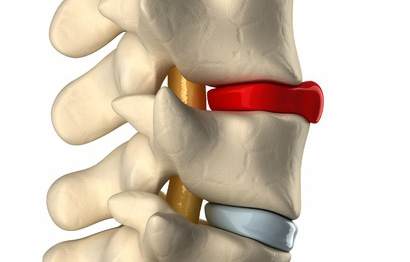
Do you have a disc bulge that is causing you incredible pain in your lower back?
Does your disc bulge give you sciatica or pain down your leg?
Have you wondered what’s going on in your lower back to cause all this pain?
In this issue of Bodi Empowerment, I go over what’s going on with your disc bulge, the cause of your pain and what kind of treatments are best for you. In other words, I act as a guide to help you decide what to do.
Disc herniations, or disc bulges occur when the disc that is found between vertebrae in the spine is damaged. Most of the time the damage occurs in stages.
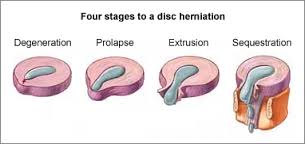
Here are the four stages of a disc herniation or disc bulge:
- Disc Bulge
- Disc Prolapse
- Disc Extrusion
- Disc Sequestration
Think of the disc as a flat hard onion with strawberry jelly inside. The jelly is the nucleus while the onion layers form circular layers of hard cartilage called the annulus.
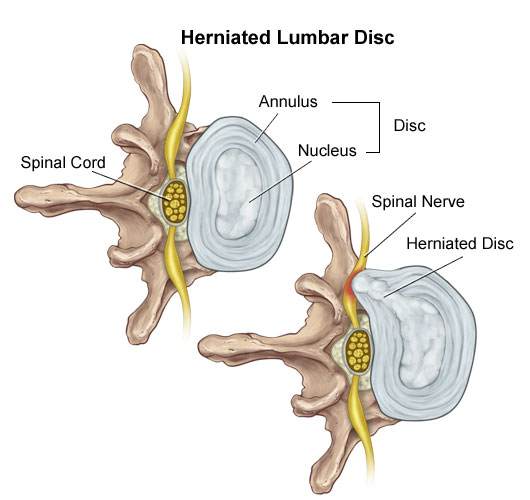
Disc Bulge
If you were to damage the annulus (onion) enough the disc gets to a point that when you bend forward, you pinch the front of the onion so it starts to bulge the onion at the back by pushing the nucleus (jelly) backwards.
This is called a disc bulge. For most of you, there is no pain but for some of you, there can be considerable lower back pain and even sciatica from this small disc bulge.
Disc Protrusion
A disc protrusion is like a disc bulge that comes out even more in one focused spot. The disc pushes out as if you had your finger inside a balloon and pushed out.
Most of the layers of the onion (annulus) have been damaged but the jelly (nucleus) is under considerable pressure. The jelly (nucleus) squeezes through the layers of the annulus (onion) with the few intact layers of the onion (annulus) and the PLL (posterior longitudinal ligament) holding the jelly from spilling out. The disc is still contained by the annulus and PLL ligament. ie the balloon hasn’t popped.
Disc Protrusions usually cause quite a bit of lower back pain and often times sciatica. Many of you, with disc protrusions, on the other hand, have absolutely no pain. There is no clear reason. A study found that 40% of people with no pain whatsoever had disc protrusion confirmed by MRI (Magnetic Resonance Imaging Machine) [1]
The trick is not to let your doctor diagnose you based on just an MRI. An MRI that shows a disc protrusion by itself is not a diagnosis. It’s what a normal person with no pain can have. Make sure there is other evidence!
Disc Extrusion
Disc Extrusion is a disc bulge so large that it breaks through the last layers of the onion (annulus) and the PLL ligament pushing into the area of the spinal cord. ie. The balloon has popped. If you have an extrusion you likely have a tremendous amount of pain leg pain and usually some lower back pain.
Surprisingly when a group of normal people with no pain were scanned with an MRI 18% were found to have disc extrusions (severe disc herniations). [1]
When you have a disc extrusion chances are the extrusion is likely causing your pain as it’s so large.
Disc Sequestration
Disc sequestration occurs when a piece of your jelly (nucleus) that breaks through the onion (annulus) and the PLL ligament has now broken off and moved away further into the spinal cord area. When you have a disc sequestration you have a tremendous amount of leg pain and some lower back pain.
Smaller Is Better: Disc Bulge
Disc Herniations or slipped discs are better if they are smaller, right? You will have less pain right? Yes except when they give you pain. Remember all those normal people with no pain with all kinds of slipped discs? They had disc bulges, disc protrusions, and disc extrusions and even disc sequestrations with no pain.
On the other hand, even with a small disc bulge, you can get a lot of pain and even sciatica with no pressure on the nerve. So smaller isn’t always better.
Bigger Is Better: Disc Bulge
Sometimes bigger is better. Most people like you with disc extrusion and sequestration have lots of pain. The fact is these painful extrusions while more painful usually shrink with time. It takes about a year but with the shrinking of the herniations, the pain does decrease.[2-5]
Disc Herniation: Disc Bulge Treatment
#1 Stop Aggravating Yourself
Half the problem why people don’t get better is that they continually aggravate their lower back and their slipped discs. Learning to lift properly, sit properly and even stand over the sink while brushing your teeth properly can help you avoid the pain.
Even Yoga exercises such as the downward dog can aggravate the lower back, Pilates and even your basic abdominal crunch have been shown by Dr Stuart McGill to increase the pressure in the disc beyond its safe limit.
If you want to find out how to stop aggravating your lower back, click the link below.
See Also: Slipped Discs: Best Self-Treatments To Help Your Lumbar Disc Herniation
#2 Exercise For Disc Herniations / Slipped Discs
For complete instructions on exercises for slipped discs click the link. Best Exercises For Your Slipped Disc
#3 Chiropractic Adjustments For Disc Bulge
A major research paper showed that people who have had lumbar disc herniations who have failed at least 3 months of medical management, including treatment with analgesics, lifestyle modification, physiotherapy, massage therapy, and/or acupuncture, should consider chiropractic spinal manipulative treatment, followed by surgery if unsuccessful. [6]
I would also add that I would try 3 different chiropractors as the competency level varies from person to person. Like any profession including medical doctors and physiotherapists, there are the good ones and bad ones.
See also: 6 Things You Should Look For In A Chiropractic Clinic
#4 Acupuncture For Disc Bulge
Acupuncture is helpful for Slipped Discs in the neck and the lower back.[7-8]
#5 Injections
In a study of two different groups getting treatment for lumbar disc herniations, the group getting chiropractic manipulation had 76.5% of the people improve while the group getting the nerve root injections improved by 62.7%.
After a month, the chiropractic spinal manipulation group had a 60% reduction in pain compared to the nerve root injection group, which had a 53% decrease in pain. Keep in mind the nerve root injection group seemed to be worse to start with compared to the spinal manipulation group.
See Also: Chiropractic Spinal Manipulation Vs. Nerve Root Injections for Lumbar Disc Herniations
Epidural injections are also helpful for lower back pain and the radiating pain down your leg.[8]
#6 Surgery
#1 Discectomy
There are two types of surgery available for slipped discs. Discectomy and spinal fusion. This surgery involves cutting out the piece of the disc that is protruding out and pushing on the spinal cord or nerve.
Discectomy is relatively simple compared to spinal fusion. You have a much better chance of success with discectomy if your MRI shows that your disc herniation is greater than 7 mm thick and correlates well with your neurological exam and nerve conduction studies.[9] If your lower back pain is greater than your leg pain discectomy will not likely work very well for you.[10]
#2 Spinal Fusion
Spinal Fusion removes the disc herniation, jelly (nucleus), and most of the annulus (onion). Bone from the pelvis is then transplanted where your disc was so that the two vertebrae become one.
What Treatment Should You Do?
You should do at least 3 months of therapy when you have a slipped disc before even considering surgery or injections. Start by not aggravating your lumbar disc. You need to modify how you bend forward, lift and even pick up your socks.
See Also: Disc Herniation: Best Self-Treatments To Help Your Lumbar Disc Herniation
If you have trouble sleeping at night you can take painkillers to help you get a better sleep. Don’t stay in bed though. When you have excruciating pain you should only have bed rest for a maximum of two days total.
Next, try chiropractic or physiotherapy with someone who also does acupuncture. Make sure it’s not with somebody who knows how to do 20 acupuncture points. Be patient with them as disc herniations can be difficult to deal with.
Attend regularly 3 times a week for at least a month. Make sure they change the treatments to find what works best for you. If they keep doing the same thing each visit but you are improving that is fine, but if you aren’t improving then it’s time to find a new chiropractor.
If you don’t get any better after a month change to a different chiropractor. I recommend trying 3 different chiropractors as different chiropractors have different training.
If you plateaued or haven’t improved at all then it’s time to get a nerve root injection or an epidural injection. Make sure it’s with a person that does this every day. An emergency room doctor or family physician only does this procedure once in a while. It’s better to get someone more experienced.
When conservative care has been completely exhausted then it’s time to consider surgery. Discectomy is more conservative than spinal fusion and recovery is much quicker. You should consider discectomy surgery if you have :
- Foot drop that is getting worse.
- Any other neurological symptoms that is getting worse like your reflexes, sensitivity
- Bowel or Bladder Symptoms (loss of your poo and pee function). : This is an emergency you should go to the hospital right away.
- If you have a disc protrusion or that is 8 mm or larger that correlates well with a neurological exam, and Nerve conduction tests.
- Leg pain is worse than your lower back pain.
Beware of the surgeon who wants to operate on a small disc bulge. There are too many unnecessary surgeries in the USA especially spinal fusion.
Spinal fusion is considered when your lower back pain is worse than your leg pain
Tell us what you think in the comments below and like us on Facebook. This Toronto Downtown Chiropractor will answer all questions in the comments section.
Research
1. Weishaupt D et al. “MRI of the lumbar spine: Prevalence of intervertebral disc extrusion and sequestration, nerve root compression and plate abnormalities, and osteoarthritis of the fact joints in Asymptomatic Volunteers.” Radiology – 1998; 209:661-666
2. Maigne JY, Rime B, Delignet B. Computed tomographic follow-up of 48 cases of nonoperatively treated lumbar intervertebral disc herniation. Spine 1992; 17:1071-1074.
3. Ikeda T, et al. Pathomechanism of spontaneous regression of the herniated lumbar disc: histologic and immunohistochemical study. J Spinal Disord 1996;9:136-140.
4. Ahn SH, Ahn MW, Byun WM. Effect of transligamentous extension of lumbar disc herniations and their regression in the clinical outcome of sciatica. Spine 2000; 25:475-480.
5. Komori H, Shinomiya K, Nakai O, et al. The natural history of herniated nucleus pulposus with radiculopathy. Spine 1996; 21:225-229.
Research
6. McMorland G et al.Manipulation or microdiskectomy for sciatica? A prospective randomized clinical study. Journal of Manipulative & Physiological Therapeutics 2010; 33: 576-584.
7. Wu, Yao-chi, Jun-feng Zhang, Yi-jun Sun, Cheng-fei Huang, Ping Shao, and Gui-zhen Liu. “Clinical study on electroacupuncture for cervical intervertebral disc herniation.” Journal of Acupuncture and Tuina Science 11, no. 6 (2013): 371-374. – See more at: http://www.healthcmi.com/Acupuncture-Continuing-Education-News/1249-acupuncture-found-superior-to-drug-for-neck-disc-pain#sthash.vD0pNepM.dpuf
8. Wang HeshanNon-Surgical Therapy For Prolapse of Lumbar Intervertebral Disc. The Journal of Traditional Chinese Medicine
9. Parr AT, Diwan S, Abdi S. Lumbar interlaminar epidural injections in managing chronic low back pain and lower extremity pain: a systematic review. Pain Physician 2009;12:163-188.
Research
10. Carragee EJ, et al “Clinical outcomes after lumbar discectomy for sciatica: The effects of fragment types and annular competence” J Bone Joint Surg Am – 2003; 85(1):102-108
11. McMorland G et al.Manipulation or microdiskectomy for sciatica? A prospective randomized clinical study. Journal of Manipulative & Physiological Therapeutics 2010; 33: 576-584.


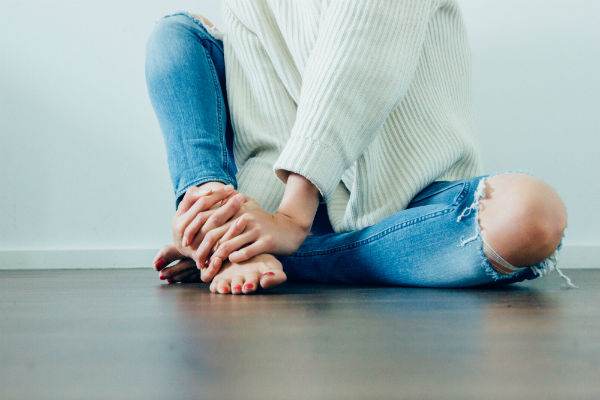
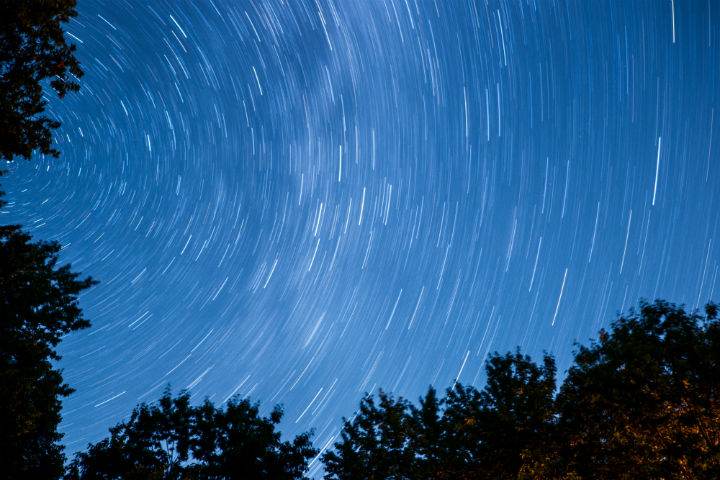
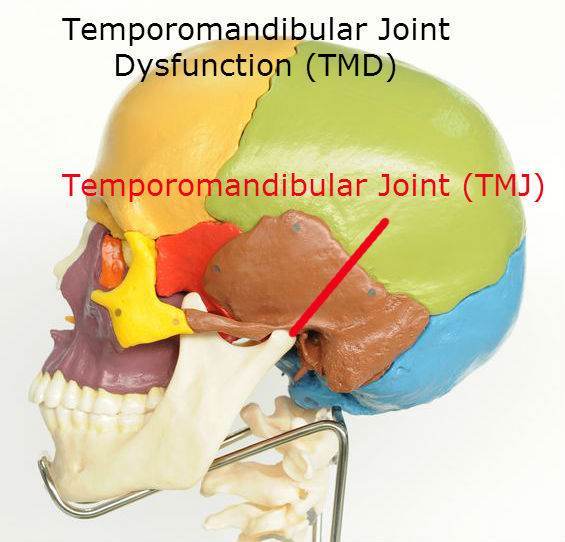

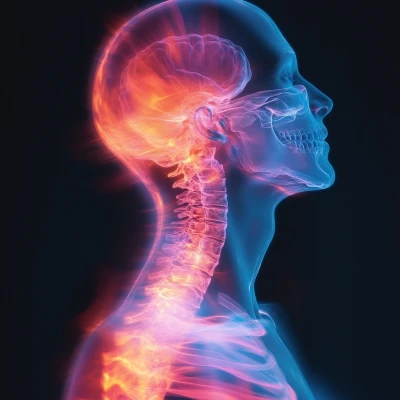

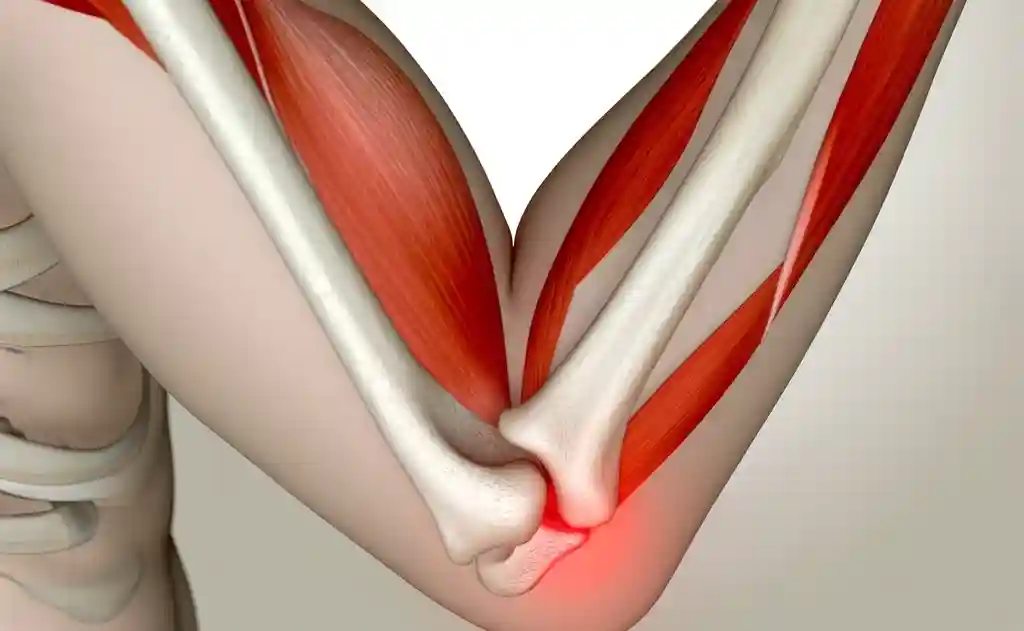
Thanks doctor for your quick response. Last month when i started off with sciatica exercises i found it difficult to do them but i am doing them with minimal discomfort nowadays ( but still i have pain radiating on the leg if I stand or walk for extended periods ). Is that a sign i am showing some improvement on my sciatica ?
Regards,
Balaji.K
Author
Thanks for your question Balaj. Sound like you are improving. Keep up with the good work. Also make sure you don’t aggravate your lower back with the things that you do everyday by reading and following this article.
https://www.bodiempowerment.com/disc-herniation-part-1/
Hope that helps your sciatica.
Good Morning Doctor, hope you are doing good. I have been doing disc herniation and sciatica exercises that you had suggested for the last one month and I find there is a 20% improvement on my right affected leg. Unfortunately i sneezed quite hard three days back and the pain aggravated, for the first time i felt pain on the tail bone. I took rest for two days with continuous ice therapy, now the pain in the tail bone has reduced 75% but still some niggle is there. Can i continue with my sciatica and disc herniation exercises or should i wait for couple more days and continue with ice therapy.
I was thinking that with the exercises i was putting my foot one step forward in the right direction but this sneeze has negated that. Awaiting your response.
Thanks,
Balaji.K
Author
Thanks for your question Balaji. You should continue on with the exercises and also add in self massage of your leg wherever it is painful.
Hope that helps your disc herniation.
Hello Doctor,
My name is Jaya, from Chennai, India. Im 30 yrs old and I had been having minor occasional pain in my left leg for the past 2 years. On June 21st of 2014, my pain increased suddenly and was not able to move at all. Then went to the doctor, took MRI and the report said:
1. Disc desiccation seen at L4-L5 and L5-S1 levels.
2. Diffuse disc bulge with mild central disc protrusion at L4-L5 level.
3. Diffuse disk bulge with left para central disc protrusion indenting the ventral thecal sac and causing left neutral foraminal narrowing .
Took physio for 2 months did have relief but once i left the pain came. Now for the pain having ice pack every 2 hours on the area which gives relief and I also do exercises like The McKenzie Extension, Bird dog, Lifting up the buttock while lying face up on the bed with knees bent once in a day.
Its been 5 months still I have 50% of pain and cannot walk for more than 2 mins and travel long distance. Please help me doctor on what to do further for recovery.
Thank you.
Author
Thanks for your question Jaya. First you have not aggravate your disc. We often aggravate our own disc by the things that we do everyday like brushing your teeth, putting on your socks and putting on your shoes, going to the temple and bending forwards. Read this article:
https://www.bodiempowerment.com/disc-herniation-part-1/
You should also try https://www.bodiempowerment.com/sciatica-4-best-exercises/.
Try taking a foam roll or tennis ball and roll and hold on to all the areas that are causing you pain.
Hope that helps your disc protrusion.
Hi Doctor,
I am 26 M .I have sciatica pain in both of my legs. Sometimes more in one than another.Though i can handle this pain, but i fear that as time will pass it will increase. It started as lower back pain a month and a half ago than in one leg. I injured my back during exercise again and it is now in both the legs.
My major MRI findings are :-
1) Schmorl’s node noted along the superior endplate of L4 vertebral body.
2)Diffuse bulge of l4/l5 disc is indenting anterior thecal sac and causing mild bilateral lateral recess narrowing.
3) Minimal bulge of L3/4 disc is also noted. There is mild ligamentum flavum hypertrophy.
I went to a orthopedic he said it is just mild bulge at l4/l5 and have given me gabapentin. I want to know if i should see someother doctor like neurosurgeon or should i look for surgery as an option. I don’t want this pain to go worse.
Doctor could help me in understanding above findings.
Author
Thanks for your questions Sehwag. First sorry to hear about your pain. Either you got in a major trauma or simply you inherited bad discs. Either way you can’t change that right now. Schmorl’s node is basically a herniation of the nucleus (jelly of a jelly doughnut) coming through into the vertebrae by breaking through the top layer of bone due to lots of pressure.
This will act and feel very much like a regular disc herniation. Since you have a diffuse bulge without to much pressure on the thecal sac it is likely that the Schmorl’s node (vertical disc herniation) is the likely culprit of your pain combined with the mild pressure at L45 disc bulge.
You likely have pain while sitting and more when you get up from sitting while standing may relieve it. Standing won’t relieve the problem if it is very bad though. Simply because sitting increases the pressure while standing decreases the pressure on the disc.
I would try the exercises in this article. https://www.bodiempowerment.com/herniated-disc-part-2-the-best-exercises-for-your-herniated-disc/
Hope that helps your vertical disc herniation (Schmorl’s Node)
Hello Sir. I am 32 year old ,my MRI result shows 1)Diffuse disc bulge at L4-L5,L5-S1 causing indentation on thecal sac bilateral moderate to severe lateral recess narrow impinging on exiting and traversing nerve roots. 2) Diffuse disc bulge at L3-L4 causing indentation on thecal sac bilateral mild lateral recess narrowing complications.
Thank you and awaiting for your reply.
Author
Thanks for your question Manteen. Your problem is much more difficult to treat conservatively (no surgery) but you should always try to do conservative therapy before doing any going on to surgery. Try the exercises listed here first. https://www.bodiempowerment.com/herniated-disc-part-2-the-best-exercises-for-your-herniated-disc/
You shouldn’t do the exercises if they give you sharp pain, pain that gets worse while doing the exercises and if you have more pain for more than 1/2 hour.
Hope that helps your disc bulge.
Thank You Sir for your reply and suggestion.
For how many weeks he should perform those exercises.
Should he perform all the exercises mention there including
Stabilisation exercises or he should first perform “Best exercises to push a herniated disc back into place” then after if he sees improvement not he should go for Stabilisation exercise.
Should he perform morning exercise, Prone Prop McKenzie, Yoga Cobras all at once. Thank you in advance.
Author
Thanks for your questions Vikas. Your brother should do all the exercises according to the instructions in the article (Herniated disc part 2)as long as he has pain. He can continue them as well to prevent them from coming back, but I would not encourage that unless he has lingering pain.
Hope that helps
Hello Sir. My brother’s age is 34 yrs and his MRI results shows –
1. Diffuse posterior bulge of L4-5 disc broad based small
posterocentral protrusion indenting thecal sac encroaching
neural foramina. Mild facetal arthropathy at this level.
2. Diffuse posterior bulge of L3-4 disc broad based medium
sized protrusion compressing thecal sac left budding nerve
root. Mild facet all arthropathy at this level further contributing
to narrowing of canal. Residual canal measures 9 mm anterior
posteriorly.
3. Mild posterior bulge of L2-3 disc intending thecal sac.
His symptom are pain in back, inner thigh, groin and above
ankle. Pain in left leg only and he can stand and walk straight
i.e he bend to one side. Doctor gave medicine for pain.
For first time doctor told he is having disc slip n asked for MRI.
Doctor after looking MRI scan, asked us to go for surgery.
What I want to ask you Sir is whether we should go for surgery or
exercise can help him to recover. And if going for surgery which
would be better. If exercise which all exercise will help him to recover from bulge and pain. Thank you n waiting for your reply.
Author
Thanks for your question Vikas. You always do exercises before surgery, unless there is a red flag. Pain in the groin and the inner thigh alone is worrying and is considered a possible red flag. If that gets worse and is combined with loss of bowel and bladder function this becomes a medical emergency with your brother needing surgery immediately. At the moment is should be fine to do exercises unless he has lost bowel or bladder function.
Try these exercises: https://www.bodiempowerment.com/herniated-disc-part-2-the-best-exercises-for-your-herniated-disc/
He should stop if he get sharp pain during the exercises or pain that gets worse while doing the exercies or pain for more than 1/2 hour after the exercises.
You need to watch for symptoms getting worse and if they do get professional help that can help you, where you are.
Hope that helps your brother’s disc herniation.
Hello Sir. I am 32 year old ,my MRI result shows 1)Diffuse disc bulge at L4-L5,L5-S1 causing indentation on thecal sac bilateral moderate to severe lateral recess narrow impinging on exiting and traversing nerve roots. 2) Diffuse disc bulge at L3-L4 causing indentation on thecal sac bilateral mild lateral recess narrowing.complications
Hello Dr. Ken Good Morning, hope you are doing good. As you suggested I am doing Disc herniation part 2 exercises and sciatica exercises for my disc extrusion at L5-S1 for the last 15 days twice daily. I would say my leg pain has reduced by 10-15% after i started these exercises. I have a few more queries and need your valuable advice on them.
1) I do these exercises before going to bed and when i wake up in the morning i find considerable amount of stiffness in the lower back both on the left and right (affected side) but this stiffness goes away in couple of hours after i start doing my routine work. Can you please suggest me some stretches that i can do before i get off from the bed to reduce this stiffness.
2) I also feel a weak hamstring and tightness around my right hamstring, could you please suggest me a hamstring stretch and strengthening exercise or could you please point out if I am already doing that as part of herniation and sciatica exercises.
3) Should I do the disc herniation exercises first then followed by sciatica exercises or the other way around.
Waiting for your valuable suggestions.
Thanks & Regards,
Balaji.K
Thanks doctor for your confidence boosting words.I shall do the exercises regularly and keep you posted on my progress.
Author
You are welcome Balaji
Hello doctor thanks for your response. I do not have any of the symptoms you have mentioned. All I have is some back stiffness in the mornings and discomfort while walking ( but bearable ). It aggravates when I lift and carry my three year old daughter for a long time. But doctor says if I do not go for surgery I may face the symptoms that you have mentioned in future . Regarding that 0.5 cm, doctor said that is the gap the nerve has to pass through.
If i give more than 100 percent and do the exercises ( sciatica and disc herniation) in roughly how much time I will start seeing improvements doctor provided I take care not to aggravate the symptoms further ? Thanks
Balaji.K
Author
Thanks for your question Balaji. In my opinion there is no way that the surgeon will know that you will get those symptoms for sure in the future. Did the surgeon recommend conservative care at all or even injections. Since you don’t have any of the indications for surgery than you should not get surgery in my opinion. You should get another opinion from someone that can actually examine you to confirm. Seems dubious to do surgery with only lower back pain in fact very dubious.
With the exercises you should start to see a difference in a month. Try them and see.
Hope that helps your disc herniation.
Dear doctor Ken I had an appointment with my ortho doctor today to discuss about my MRI scan results. After reviewing the results he said surgery is the only option to relieve my pain. The reason he said was L5-S1 measurement was 0.5 which was putting lots of pressure on the nerve. I am doing the sciatica and disc herniation exercises as you had advised for the last 10 days twice daily. I am getting nervous and anxious. Please share your thoughts on this. Thanks
Balaji.K
Author
Thanks for your comment Balaji. I have a different opinion but I am not your surgeon. Keep in mind the research indicates that disc herniations that are less than 8mm do not do well with microdiscectomy surgery. This is the most common surgery for disc herniations. (I have the references if you like) If your surgeon is thinking about fusion surgery this becomes a much bigger surgery and more invasive.
Also you should always do conservative therapy the first for 3 months.
1. Unless you have saddle anesthesia (numbness / pain in the area around your buttock and inner thigh-where a saddle would touch if you were riding a horse)
2. Loss of bowel and bladder functions (poo & pee).
3. Nerve function that is getting worse eg. foot drop that is getting worse, groin pain that turns into bowel and bladder not functioning or having to go more often, muscles that are getting weaker and weaker.
4. A disc should be at least 8mm (more than 8mm) for microdiscectomy for surgery to be successful.
Disc extrusions and disc sequestrations also get absorbed by the body within 6-12 months at which time you start feeling better. Most people can’t wait that long though.
Hope that give you something to think about regarding disc herniations.
Having said all this I am not examining you. In balance in the US and UK where private medicine exists a lot of unnecessary surgery goes on especially for fusion surgery. (I can also back up this statement with articles and statements from the US government).
I am assuming that you are saying that disc is 5mm or 0.5 cm. Correct me if I wrong with this assumption.
I would get a second opinion from another surgeon if I were you and seek out care from a local health professional. In the mean time here are ways to stop aggravating your lower back and exercises for you.https://www.bodiempowerment.com/disc-herniation-part-1/
https://www.bodiempowerment.com/herniated-disc-part-2-the-best-exercises-for-your-herniated-disc/
Hope that helps your disc herniation.
Thank you doctor for your response. I shall keep you updated on my progress 🙂 Cheers!!
Author
You are welcome Goutham. I hope you keep improving your disc herniation.
Hello, At first, i appreciate your effort to help other people. i have a query. As i am in China, so I have a language barrier, so i do not know what really happened to me. Please help me understand with my symptoms and one raw diagnosis which i really can’t understand.
I have a severe headache at right side of my head. It is flowing from neck to forehead and then back to neck. I had neck pain for two days but now i do not have. I have some swelling on my right side my face under the ear and also on the neck.
Doctor told me that i have twisted vein. He advised me to rest and just gave me some pain killers. What does it mean? Is it related to herniation? Please reply me
Author
Thanks for your comments Arroj. You really don’t get a lot of swelling in the face with nerve issues or disc herniations. If you had trauma that would be understandable but if you didn’t have any trauma to your neck or head than you need to look other possible diagnosis. I would get a second opinion at the local hospital if I were in your shoes.
Could be a translation problem but if you only got pain killers the diagnosis of “twisted vein” is probably what the doctor actually thinks. You need a second opinion right away.
Hope that helps.
Hi Doc
I’ve been suffering from lower back pain for the last couple of months. Went in for a MRI scan today. Please find below the Impression
1 . Early changes of cervical spondylosis
2. Diffuse posterior disc bulge with postero central protrusion in L5-S1 level intending the anterior thecal sac causing focal lumbar canal narrowing.
3. Bilateral lateral recession narrowed at L5-S1 level with compression of Bilateral traversing nerve roots.
Please suggest exercises and precautions to be taken.
Thanks in advance
Regards
Goutham
Author
Thanks for your comment Goutham. Why don’t you try these exercises as you have disc protrusion. https://www.bodiempowerment.com/herniated-disc-part-2-the-best-exercises-for-your-herniated-disc/ If you get sharp pain, or pain that keeps getting worse or pain for more than 1/2 hour after the exercises than the exercises are not for you.
Hope that helps your disc protrusion.
Thanks doctor for your quick response. As you have suggested I shall start with sciatica exercises from tomorrow. Shall I discontinue with herniated disc part 2 exercises or shall I continue them along with sciatica exercises because I also have a minimal posterior disc bulge at L4 -L5.
Thanks & Regards,
Balaji. K
Author
Balaji. I would do both sets of exercises.
Hope that helps.
Dear Doctor Ken, I am from Chennai India. I am 30 years old and I have lower back pain problem for the last 5 years and it has become little severe in the last 7 months. My ortho doctor suggested me to go for an MRI and below are the findings from the MRI.
” Central and right para central posterior disc extrusion at L5-S1 level with narrowing of the lateral recesses and impingement of the S1 nerve roots – more on the right side. No obvious sequestration is noted.
Desiccation and loss of height of this intervertebral disc is noted.
Minimal posterior disc bulge are noted at L4-L5 level.
No significant nerve root compression or thecal sac identation are noted at this level. ”
I have been doing your exercises for herniated disc part 2 for the past 45 days twice daily, it gives me temporary relief but the pain comes back after a few hours.
https://www.bodiempowerment.com/herniated-disc-part-2-the-best-exercises-for-your-herniated-disc/
Could you please advice me if I am doing the right exercises and what other exercises i can do to get rid of this monster which is acting as an hindrance to my lifestyle.
With Thanks and Hope,
Balaji K
Author
Thanks for your comment Balaji. When you have a disc extrusion it means there is quite a lot of pressure. Exercises may not be the answer for you to give you relief. Having said that try the sciatica based exercises first for another month.
https://www.bodiempowerment.com/sciatica-4-best-exercises/
Hope that helps your disc extrusion.
Dear Sir,
I have done the MRI,observation are as follows :
1. Disc degeneration with posterior disc bulge at L3/L4 to L5/S1 level causing indentation on the thecal sac.
2. The degenerated disc displays hypo intense signal intensity on T2 weighted imates.
Impression :
Lumbar Spondylosis
Please give some suggestions.
Regards,
Suraj Bahadur
Author
Thanks for your question Suraj. Try these exercises. https://www.bodiempowerment.com/herniated-disc-part-2-the-best-exercises-for-your-herniated-disc/
If the pain goes further down the leg or buttock or increases in pain after doing the exercises than you should stop.
Hope that helps your disc bulge and lumbar spondylosis.
Thanks very much for your assistance. It has been extremely helpful. Steve
Author
You are welcome Steve.
Dear ken,
This is subbu aged 27 years suffering with low back pain for 2 years. recently my doctor suggested MRI. the results are:
* Hemangioma measuring 13*8 mm in D11 vertebral body, 7*7 mm in D 12 vertebral body.
* Mild central disc bulge noted at L4-L, no significant nerve root compression.
pls suggest the treatment and exercises for pain relief.
Author
Thanks for your question Subba. Telling me just the results of your MRI is not a good idea as the MRI is not a diagnosis neither is saying you have back pain for two years. The pain can be from anything. Hemangiomas often don’t cause pain and a mild disc bulge most often don’t cause pain. Without any details I can’t make any suggestions or recommendations.
Thanks for the comments Dr Ken, I really appreciate them. Final quick question. Could you point me in the direction of any research (perhaps academic) that describes ‘the life cycle’ of a disc herniation. I am really interested in the whole process and hope that a deeper understanding will allow me to be more preventative and perhaps aid rehab after a hernia. Thank so much, Steve
Author
Thanks for your question Stephen. All of the articles for the article are posted at the bottom of the article under “research”. I think those articles should help. I got all my information from those papers.
Hope that helps your research of disc herniations.
Dear Dr Ken, Thank you so much for a very informative selection of articles related to disc bulges etc. I am currently experiencing my second serious herniation on the L5-S1 disc. The bulge has been affecting my right leg with sciatica which basically stops me from walking anywhere for more than a few minutes. We are now around 15 weeks and counting so I hope it will go away soon. I have a question or two.
a) Because the recovery period is so long and the day to day incremental improvement is minuscule (if any) I have real trouble understanding what behaviour is actually helping me recover. Eg should I do stability exercises, McKenzie extensions, Piriformis, should I swim, ride my bike, try to walk more etc. It seems that nothing I do makes any real difference. I wonder if you had any observations on that.
b) When I get the sciatica twinges at first, I immediately curtail any flexion exercises (I swim, cycle, play soccer regularly). But it does not seem to help. It is almost like once the bulge/sciatica process has begun it is going to gradually work its course whatever happens. So my question is how can you ‘feel’ when your herniation is getting worse and therefore may impinge the nerves? I don’t seem to be able to work this out.
I am a 50y old male weighing 65 kg who loves to be active, mostly I swim, cycle and play soccer.
Any guidance you might offer is most welcome and once again, thank you for the informative site.
I live in London.
Bye
Author
Thanks for your comment Stephen. Providing that your disc herniation is more typical ie.disc herniation is going backwards instead of sideways or even forwards than the exercises should help you.
a)You should do Stability and Mckenzie extensions that I mention here https://www.bodiempowerment.com/herniated-disc-part-2-the-best-exercises-for-your-herniated-disc/
Also the everyday things that you do affect if you will aggravated your disc. That article is mentioned right here. https://www.bodiempowerment.com/disc-herniation-part-1/
b) It’s a good start to stop the flexion exercises but you need to do the extension exercises when you feel the twinge (again provided that your disc is going backwards like most people). As for the feeling that you are getting worse. When the pain starts going further away from the back you know that you are getting worse. ie if the pain usually goes down to the back of the knee and it starts going to the calf, that is a sign that you are getting worse. More frequent and stronger pain is another indication.
For the sciatica exercises look here: https://www.bodiempowerment.com/sciatica-4-best-exercises/
Hope that helps your disc herniation.
Hi Dr Ken
I am 29 yr old male from Australia, I injured my lowerback while having sudden impact of falling heavy boxes towards me while working. I have severe lowerback pain and its already more than 3 months recovering. I have had MRI scan and the result shows : early disc desiccation at L3/4 with minor broadbased disc bulging. Still I am suffering from pain. Could you please reply with what can I do more to stop this pain.
Author
Thanks for your question Sunny. It’s not clear where your pain is coming from based on the information you have given me. Early disc dessication is something every body has usually by the time they are 40 year of age. For some people it comes earlier. This won’t be form the accident though as it takes time to develop and certainly more than 3 months. The disc bulge can be due to the accident but it’s also part of disc dessication AKA degenerative disc disease.
I can’t make any recommendations for you as you can have ligaments and muscular damage, instability, disc herniations, degenerative disc disesase or even other types of problems that could be causing your pain.
You need to consult somebody that can examine you.
Hi Dr Ken,
May I first say how informative your website is! And how much help you are providing everyone! You are very kind, so I thank you!
I was hoping you may be able to help me on some exercises etc I should be doing;-
L4/5 – left sided paramedian disk potrusion. Not impacting on the nerve which is good.
L5/S1 – right para central annulus tear. No deformity of the dural sac. No impact on the nerve.
I have had some serious pain for the last 2 months and am currently taking various medication.
I am doing the McKenzie method – the slide guide which I think is helping. But is it worth doing the bird dog also? Shall I do back extensions? What are your thoughts on swimming?
Thank you very much! Any advice or suggestions on helping my recovery would be highly appreciated.
Regards
Wes
Author
Thanks for your question Wesley. McKenzie will likely help you but you should not start out with the side glide as the side glide is for a more lateral herniation meaning that the disc is going out to the side. Your disc is going out the back and a little to the side so typically the extension such as cobra and sphinx work better although that is not what it is called in McKenzie Method.
1. It is worth doing Bird Dog along with planks, side planks and curl-ups, and squats without weights.
2. Swimming is great for disc herniations as long as it’s done lightly.
Hope that helps your disc herniation.